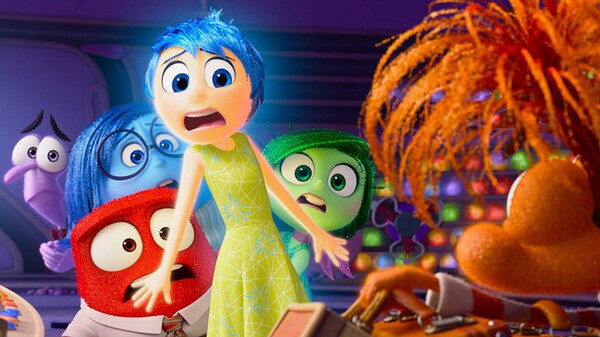The TV choice for children and pre-adolescents in Italy in the Digital era
Recently, The Catholic University of the Holy Heart in Milan presented
the first report by Focus in Media, the Observatory of the Foundation
for Subsidiarity. It was promoted in collaboration with Sky Italia,
edited by OssCom, an active research centre on media and communication
and directed by Piermarco Aroldi of the Catholic University.
The first chapter is about the triennial project “Television and
Childhood”, and describes what TV offers to children and
pre-adolescents aged between 0-14 years old in Italy in the Digital
Terrestrial and Satellite era. The report gives a critical analysis and
general proposals with significant educational and socio-cultural
implications, in consideration of anthropological needs of our time.
Boom Offer – TV programmes for children and pre-adolescents have almost
disappeared from the general networks of the Rai (the National TV
network) and Mediaset (commercial network) as both networks have
operated a policy of disinvestment and as a consequence collocate these
programmes in residual viewing time slots. Kids and pre-adolescent TV
programmes have landed into the rich world of thematic channels on
digital technology wings, thanks initially to Satellite and then to
Digital Terrestrial TV. There are twenty-two channels for the 0-14 age
target, which do not include the time-shifted versions +1 and +2.
Italy, today, can boast a wide variety of programmes just like The
United Kingdom, Spain and Germany. I briefly mentioned earlier, there
are two main systems of distribution: Digital Terrestrial TV, which
works on a pay or free platform with universally accessible (either
National TV network or commercial networks). The second system is the
Satellite TV, which works on a pay platform and operates mainly with
trans-national players. Seven of the twenty-two channels are freely
accessible on Digital Terrestrial TV and fifteen channels are available
on payment between Satellite and Digital Terrestrial TV. A total quota
of free access, which is equal to the modest 19%, which is a figure
superior to the even more modest European level, calculated at 16,3%
where 245 channels out of 300 are payment channels. From the basis of
this data, TV programmes for the youngest are a real and proper driver
in the pay market especially in Digital Terrestrial TV.
National and Transnational players – Amongst the national operators,
the Rai and Mediaset are the most prominent and have always influenced
TV in Italy. Alongside these two are the DeAgostini group and
Switchover Media editor (recently joined the Discovery group) which are
already present on Satellite TV (Sky Italia Pay TV reigns indisputed in
this sector). If we look closely at the Italian choice of Rupert
Murdoch’s Sat Pay TV (30 channels, of which 18 prime channels) the
American players emerge which dominate the international market:
Disney, Viacom and Turner. In addition to the DeAgostini group and
Switchover media, there are the British channels Chellozone, Fox group
and last of all Planet Kids with its multi-cultural programmes in two
languages. On Sat Free there are also two Al Jazeera channels which are
appealing to young viewers in Arabic. The researchers of OssCom make a
particular mention to the Rai player for its two channels aimed at the
pre-school and school age groups, which rank high Italy in an ideal
mini European classification of public service broadcasting where the
BBC’s model for quality and service to the audience is exemplary.
However, it might be said that the Rai in some aspects is a long way
off from reaching this standard. The report also states that the Rai
spends only a fifth of what the BBC spends on kids-tweens TV
programmes.
Target – The sex of the viewers and above all the age influences the
strategies of positioning within the competitive scenario. The latter
has been consolidated on an international level and Italian TV reflects
this pattern: fourteen channels for 7-14 age group, seven for 3-6 age
group, one for 0-3 (toddlers) age group. Disney has given an excellent
example of TV programmes aimed more specifically for the sexes i.e.
Disney XD for boys and Disney Channel for girls and pursue precise
niche policies. This kind of strategy has been adopted and works mainly
boys and girls of school age.
Between educational and entertainment – In the Italian TV scenario for
children and pre-adolescents, there lacks variety on all levels and
gives rise to some criticism. There are, however, some positive signs
along the educational-entertainment axis. The Pre-school age group has
a strong educational input where interactive and participation
components directly involve the viewer. For example, in “Missione
cuccioli” (Mission Puppy), by DeAKids, children learn to take care of
their dog with the help of a dog-trainer. The situation for the older
age group is more complex because it is less specific and more open to
a wider range of public and tends to lead frequently into a fusion of
programmes for both the young and adults. This has lead to a real
adolescentization of supply. The need to capture the attention of
various below-targets pushes Digital TV and Sat TV to draw on the
experience of the general TV networks and their entertainment based on
programmes, titles and stars from transnational blockbusters. It is a
form of entertainment which can be considered “safe” in some cases, as
it is based on a trust pact and guaranteed by a brand and is usually
available through subscription. In other cases, it is pure
entertainment with talent shows, realities, sitcoms and teen soaps (set
in schools or homes). There is also a more factual format which covers
day-to-day aspects with a tutorial approach such as how to choose the
right dress, how to cook and so on which were originally aimed at
adults but have been re-tailored ad hoc for the new target.
Marketing 2.0 – As a whole, a television programme schedule with a high
number of viewers, supported by celebrity appearances, created (in many
cases) by the infinite source of (endless) talent and reality shows,
and appreciated by the “young” are certainly determining factors in
credit or identification strategies promoted by the networks. Networks
are supported more and more by Institutional Websites which allow
players to increase further the value of their own TV package by
adopting strategies to involve the spectator through services and
exclusive content. Furthermore, it helps them to multiply the
possibilities of marketing for their own products. All things
considered, marketing 2.0 strategies, which have formidable allies in
the evolution of the web and in multimedia logic, and which, are more
generally found taking root in commercialization policies associated
with licensing and royalties. In 2011, in Italy alone, more than 300
million Euros were made from royalties. Character licensing is also
interesting because it is something which rotates round the idea of a
character such as the timeless Disney characters. These are able to
raise a high level of licenses in sectors ranging from clothing to
stationery and as a result they constitute a real brand to exploit in
the sector of integrated projects in merchandising.
Lights and shades – From the statistics Children’s TV will have no
obstacles the day after switch-off but there are certainly some points
to consider regarding investments, originality and quality of content
which cannot be compared with the extraordinary growth recorded on a
quantitative level. The reason being for this is a small and fragmented
market which is incapable of making sufficient revenue to sustain the
costs of production. It is also a system which does not encourage
variety through instruments to sustain production and distribution and
which sets out indications for planning in the public license sector
only. As a result, this segment of TV becomes prevalently commercial
and thus a lowering of supply which in concrete terms means that TV
programmes are repeated and recycled from channel to channel and are
somewhat dated (used to appeal to adults, parents in particular), they
resort to foreign products which are mainly from the US. The result is
that only 5% of programmes are made in Italy compared to the United
Kingdom and France who average between 19% and 17%. The most
preoccupying aspect which has emerged from the research is the result
of the massive presence of Pay TV which could create a
economic-cultural divide between those who can afford to watch premium
content by transnational broadcasters on Sat Pay TV and those who have
to be content with the choice of Digital Terrestrial TV.
Italian TV, as a whole, finds itself in great difficulty as it suffers
from the economic crisis in general. It has also seen a notable fall in
returns and a decrease in commercial profits of 17,9% (data by Agcom).
The market is also becoming crammed, as there is a continual arrival of
new players ready to compete on all the available platforms.
Consequently, it is necessary for regulating and supporting mechanisms
to be adopted. There is also a need for entrepreneurs to make long-term
plans and take courageous decisions to improve the quality of content
and the productive investments, particularly in the choice regarding
the youngest viewers. If we go beyond the data given, it would seem
that this is in short the final message of the research and the
challenge of the future. There is clearly a need for a television able
to respond to the requests made by agencies and educational
institutions. Not only this, it should be able to propose unique
products, tailor made to suit the users in respect to the variety of
voices and cultural models. Ultimately, it should be able to use
multimedia devices to keep up with the times in order to exploit better
the opportunities given by the Internet and network technologies.














